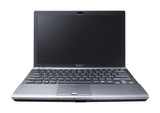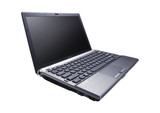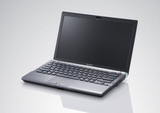Sony Vaio VGN-Z21ZN/X
Specifications

Price comparison
Average of 3 scores (from 4 reviews)
Reviews for the Sony Vaio VGN-Z21ZN/X
Source: Pocket Lint
 Archive.org version
Archive.org versionThere’s no doubt the Sony VAIO Z-series is expensive; too expensive for the regular consumer, and for most those extra tenths in performance, features, mobility will be impossible to justify. The fact remains, however, that it’s also one of the best laptops we’ve ever seen. It offers a perfect blend of performance and mobility, proving everything a laptop should be. It allows you to take it with you everywhere you go, without making compromises over your regular desktop PC. It’s everything a laptop should be.
90
Single Review, online available, Medium, Date: 06/01/2009
Rating: Total score: 90%
Foreign Reviews
Source: Tom's Hardware
 DE→EN Archive.org version
DE→EN Archive.org versionSingle Review, online available, Long, Date: 03/11/2009
Rating: price: 50% performance: 90% features: 80% mobility: 80% workmanship: 70%
Source: Chip.de - 2/09

Single Review, , Very Short, Date: 01/01/2009
Rating: Total score: 80% price: 60% performance: 90%
Source: Chip.de
 DE→EN Archive.org version
DE→EN Archive.org versionSingle Review, online available, Short, Date: 12/16/2008
Rating: Total score: 87% price: 53% performance: 100% features: 99% display: 96% mobility: 76% ergonomy: 75% emissions: 40%
Comment
NVIDIA GeForce 9300M GS: Compared to the 9300M G, the GS has only 8 unified shaders but a higher clock rate. Therefore, the performance should be similar according to Nvidia. Supports
Hybrid-SLI (GeForceBoost and HybridPower) with Nvidia 9100M G and PureVideo HD (VP3).
Only some 3D games with very low demands are playable with these cards.
» Further information can be found in our Comparison of Mobile Graphics Cards and the corresponding Benchmark List.
Intel Core 2 Duo: This is the Core Duo and Core Solo successor with a longer pipeline and 5-20% more speed without more power consumption. As an addition to the Core Duo design there exists a fourth decoder, an amplified SSE-unit and an additional arithmetical logical unit (ALU).
The Core 2 Duo for laptops is identical to the desktop Core 2 Duo processors but the notebook-processors work with lower voltages (0.95 to 1188 Volt) and a lower Frontside bus clock (1066 vs 667 MHz). The performance of equally clocked notebooks is 20-25% lower than Desktop PCs because of the lower Frontside bus clock and the slower hard disks.
P9500:
The P9500 is a fast middle class dual core CPU for laptops and basically a Core 2 Duo T9400 with only 25 Watt TDP.
» Further information can be found in our Comparison of Mobile Processsors.

















